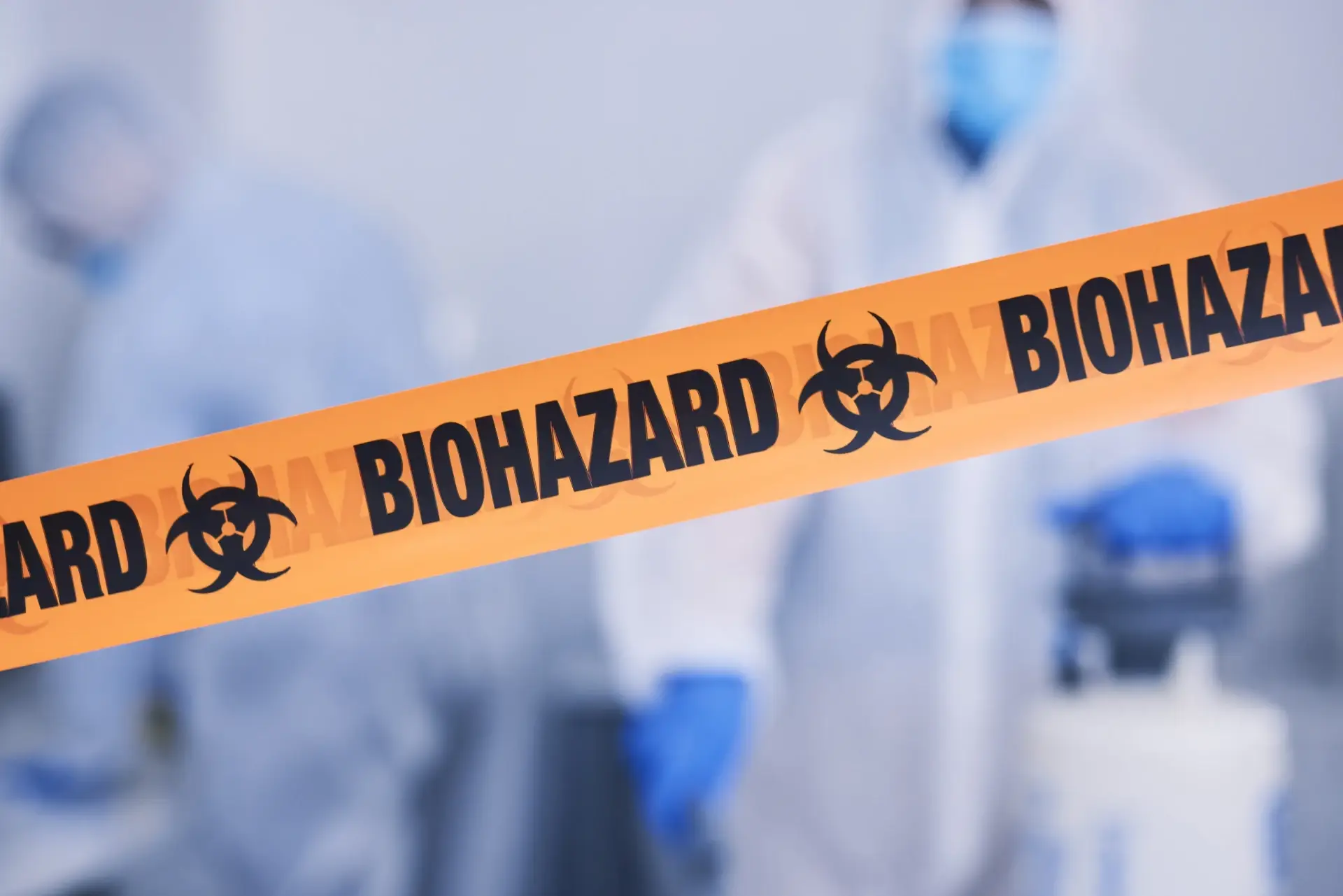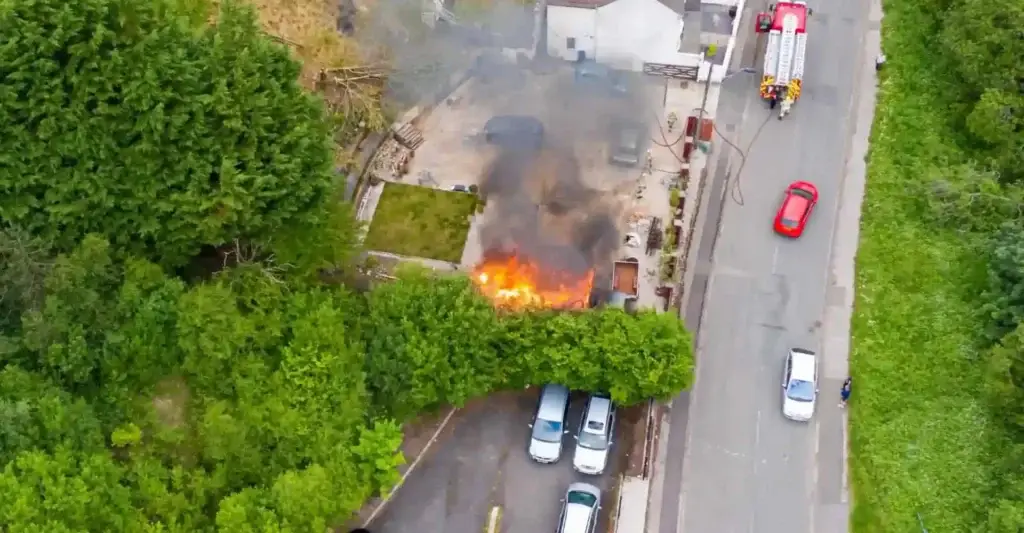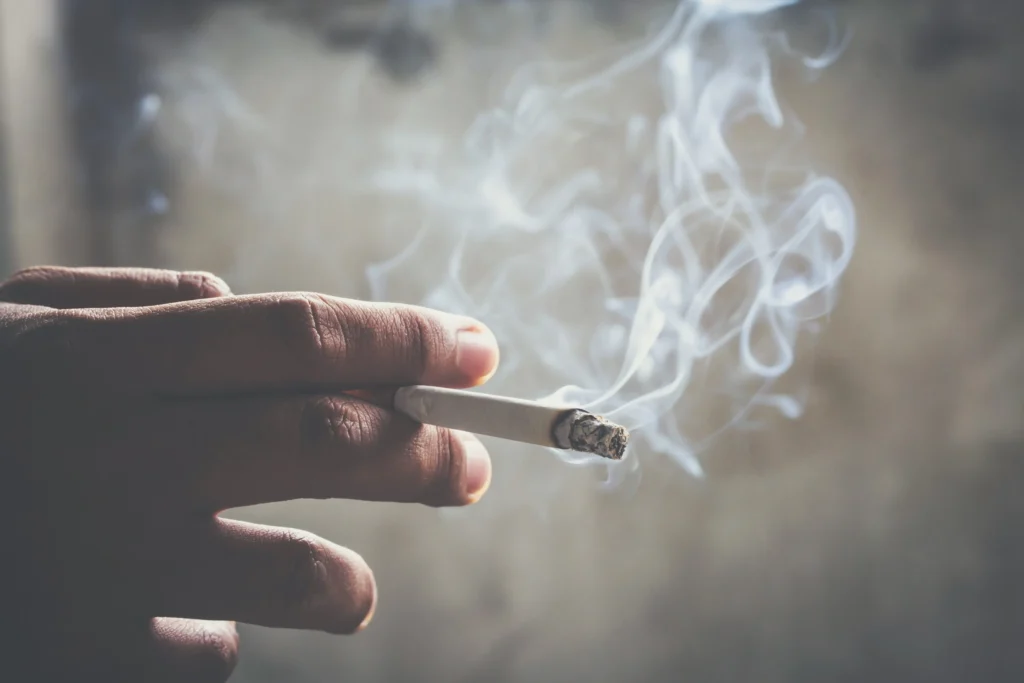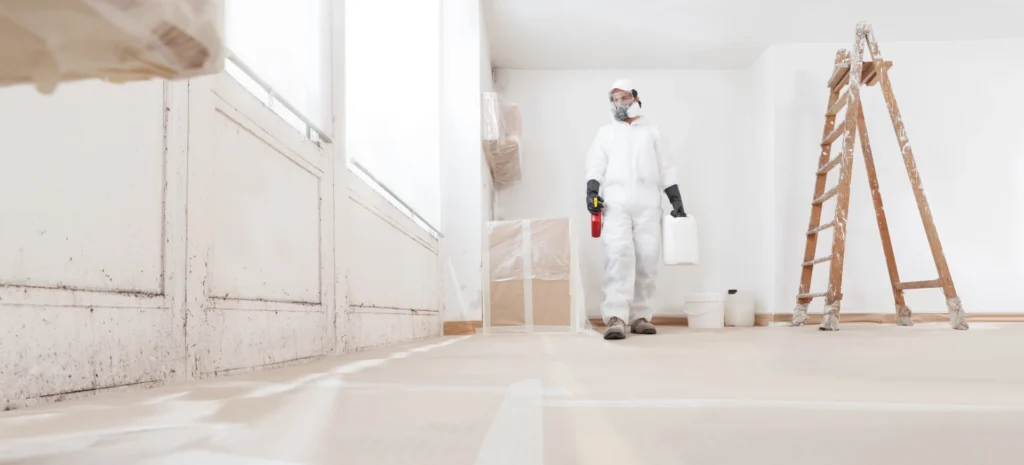Biohazard cleaning is a world away from your everyday tidy-up. When a hazardous event strikes, from a crime scene to an infectious disease outbreak, you’re not just dealing with a mess, you’re facing serious risks to health and safety. In the UK, trying to handle these situations yourself is not only dangerous but can also be against the law due to strict health and safety regulations.
This guide will walk you through everything you need to know about biohazard cleaning, including what it involves, why it’s so critical for both homes and businesses, and how professional services ensure a scene is restored to a safe condition.
Skip to:
The biohazard cleaning process
Why you should never attempt a DIY clean-up
What is a biohazard and why is it so dangerous?
A biohazard is any biological substance that poses a threat to the health of living organisms. These hazards come in many forms and can be present in places you would least expect.
Common biohazard scenarios include:
- Crime and trauma scenes: The aftermath of a violent crime or trauma incident often involves blood, bodily fluids, and even forensic chemicals, all of which can contain dangerous pathogens.
- Unattended deaths: When a death goes undiscovered for a period, the decomposition process can release a cocktail of harmful bacteria, viruses, and gases into the surrounding environment. In England and Wales, deaths in private homes have been on the rise since 2007, highlighting this as a significant concern for homeowners.
- Infectious disease decontamination: We’ve all become more aware of the risks of viruses and bacteria. A professional deep clean is essential to stop the spread of infectious diseases like norovirus, influenza, and even more serious pathogens.
- Hoarder clean-ups: What may look like simple clutter can be a breeding ground for dangerous bacteria, mould, and rodent infestations, making it a serious biohazard.
The risks of trying to tackle a biohazard without the right expertise and equipment are severe:
- Exposure to pathogens: Bloodborne viruses like Hepatitis B, C, and HIV can survive on surfaces for days.
- Contamination: Biohazards can easily spread through air or contact, contaminating other areas of your property.
- Legal consequences: UK regulations, including the Health and Safety at Work Act 1974 and the Control of Substances Hazardous to Health (COSHH) Regulations 2002, mandate proper handling and disposal of biohazardous materials. Failing to comply can lead to hefty fines and legal action.
The biohazard cleaning process: How the experts do it
Professional biohazard cleaning is a highly specialised service that follows a meticulous, multi-step process to ensure complete decontamination and safety.
- Assessment and containment
The first step is a full assessment of the scene to identify all potential hazards. Technicians then establish a containment zone to prevent cross-contamination. This involves using barriers and negative air pressure systems to stop airborne contaminants from spreading. - Removal and disposal
All contaminated materials, from bodily fluids to porous materials like carpets and furniture, are carefully removed and sealed in special biohazard bags and containers. This waste is then transported for certified and compliant disposal, ensuring it doesn’t pose a risk to the wider community. - Cleaning and decontamination
With the bulk of the hazardous materials removed, the team begins the deep cleaning process. This involves using hospital-grade disinfectants to thoroughly sanitise all surfaces. Advanced techniques, such as fogging, are often used to ensure disinfectants reach hard-to-access areas and eliminate all pathogens. - Verification and restoration
The job isn’t done until the area is confirmed safe. Professionals conduct rigorous testing, including surface swab tests and air quality checks, to ensure no biohazards remain. Any structural damage is then repaired, with restoration work carried out to return the area to its original, pre-incident condition.

Why you should never attempt a DIY clean-up
For many, the first instinct after a traumatic event is to handle the clean-up themselves. However, attempting to clean a biohazard without professional training is a huge risk. Not only can it expose you to dangerous pathogens, but it can also lead to incomplete decontamination, leaving your property contaminated and a danger to others.
The cost of a professional service can seem high, but it pales in comparison to the financial fallout of an improper clean-up. For instance, the average cost of a UK crime scene clean-up is around £3,500, a figure that can escalate significantly if a body was left unattended. This cost is often covered by insurance and is a small price to pay to ensure your property is safe and compliant.
Does insurance cover biohazard cleaning?
A key question for both homeowners and business owners is whether their insurance policy will cover the cost of a biohazard incident. The good news is that in many cases, professional biohazard cleaning is covered under standard homeowners or business insurance policies. However, it’s crucial to understand the specifics.
Coverage typically falls under sections of a policy related to accidental damage or specific events. For example, damage caused by a crime scene or a sudden, unexpected event may be covered. However, it’s always best to check the fine print of your policy or contact your insurance provider directly to confirm your coverage.
A professional biohazard company can also be a valuable partner in this process. They can provide you with the necessary documentation and detailed reports that insurance companies require, helping to streamline your claim and reduce the administrative burden on you during an already difficult time.
Choosing a professional for peace of mind
When dealing with a biohazard, peace of mind is invaluable. By choosing a professional biohazard cleaning company, you get more than just a cleaning service. You get:
- 24/7 rapid response: Professional teams are ready to respond at any time to minimise health risks.
- Expertise and compliance: Technicians are trained to handle biohazards in line with all UK regulations.
- Discreet and compassionate service: These situations are often sensitive. Experts handle them with the utmost care and respect.
For businesses, professional services also ensure you are fully compliant with UK health and safety laws, protecting you from legal action and a damaged reputation.
Professional biohazard cleaning in action
A major UK building consultancy encountered a serious issue when 14 abandoned properties scheduled for demolition were taken over by squatters. The sites were contaminated with hazardous waste, including discarded needles and drug-related items, creating dangerous conditions for staff and forcing delays to the demolition project. Read the full case study and discover how the biohazard cleaning team at Ideal Response ensured this project was finished within 10 days.
The final step to take
Following a hazardous event, the last thing you need is to risk your health, your home, or your business. If you are facing a biohazard, your priority should be to secure the area and seek expert help. A professional service provides the expertise and peace of mind that the job will be done safely, discreetly, and in line with UK regulations.
Dealing with a biohazard? Protect your property and peace of mind by contacting us for an immediate biohazard cleaning quote. Alternatively, explore the biohazard cleaning service further.
Need to speak to a specialist urgently? Call 01622 926 505
Frequently asked questions about biohazard cleaning
What is considered a biohazard that requires professional cleaning in the UK?
A biohazard refers to any biological or chemical substance that poses a risk to human health and the environment, requiring specialised handling and disposal. In the UK, common scenarios necessitating professional biohazard cleaning include crime and trauma scenes (blood, bodily fluids, forensic chemicals), unattended deaths (decomposition-related contamination), infectious disease outbreaks (bacteria, viruses, fungi), sharps disposal (needles, medical waste), hoarder clean-ups (rotting waste, infestations), and industrial accidents involving hazardous substances.
Why is professional biohazard cleaning essential, and what are the risks of DIY?
Professional biohazard cleaning is essential due to the severe risks associated with handling hazardous materials without proper training and equipment. Attempting a DIY clean-up can lead to exposure to dangerous pathogens (like Hepatitis B/C, HIV), toxic chemical hazards, and airborne contaminants. Furthermore, strict UK regulations (e.g., Health and Safety Executive guidelines, COSHH, Hazardous Waste Regulations) govern the proper disposal and decontamination of biohazardous waste. Failure to comply with these laws can result in significant fines and legal action, compromising both personal safety and legal adherence.
What steps do professional biohazard cleaning companies follow in the UK?
Professional biohazard clean-up services in the UK adhere to a meticulous, structured process to ensure complete decontamination and safety. This typically involves:
-
Assessment and risk evaluation: Identifying hazards and developing a tailored plan, including testing for contaminants.
-
Containment and safety precautions: Establishing zones with barriers and negative air pressure systems, alongside the use of comprehensive Personal Protective Equipment (PPE).
-
Removal of biohazardous materials: Carefully collecting and disposing of all contaminated waste in compliance with UK regulations.
-
Cleaning and decontamination: Thoroughly cleaning surfaces with hospital-grade disinfectants and using advanced techniques like fogging, UV light sterilisation, and HEPA vacuuming.
-
Verification and testing: Conducting rigorous surface swab tests and air quality checks to confirm the area is free from biohazards.
-
Restoration and final clean-up: Repairing any structural damage and restoring the area to its original, safe condition.
What UK regulations govern biohazard waste disposal?
In the UK, biohazard waste disposal and clean-up are governed by several stringent legal frameworks to ensure public health and environmental safety. Key regulations include the Health and Safety at Work Act 1974 (protecting workers from hazardous substances), the Control of Substances Hazardous to Health (COSHH) Regulations 2002 (requiring proper handling and disposal of hazardous materials), the Hazardous Waste Regulations 2005 (mandating correct storage, transport, and disposal of biohazardous waste), and the Environmental Protection Act 1990 (regulating waste disposal to prevent pollution). Non-compliance can result in substantial fines and legal repercussions.
How do biohazard cleaning professionals ensure an area is completely safe and decontaminated?
Biohazard clean-up professionals ensure an area is completely safe and decontaminated through a rigorous, multi-stage process and the use of specialised equipment. After initial removal of visible hazards, they use hospital-grade disinfectants and advanced techniques such as fogging, misting treatments, UV light sterilisation, and HEPA vacuuming to eradicate all biological contaminants from surfaces and air. Crucially, they perform rigorous verification and testing, including surface swab tests and air quality checks, to scientifically confirm that no traces of biohazards remain, guaranteeing the area’s safety and habitability.
What kind of PPE do technicians wear?
Biohazard clean-up technicians wear extensive Personal Protective Equipment (PPE) to prevent any exposure to hazardous substances. This typically includes full hazmat suits, respirators (such as FFP3 masks), multiple layers of gloves (e.g., nitrile), waterproof boots with protective toe caps, and eye/face protection (safety glasses or full-face visors). The specific level of PPE used is determined by a thorough risk assessment of the scene’s hazards, ensuring maximum protection against pathogens, chemicals, and airborne contaminants.
Does insurance cover the cost of biohazard clean-up in the UK?
In many cases, the cost of biohazard clean-up in the UK may be covered by homeowners’ or business insurance policies, particularly if the incident stems from an insured event like a crime, accident, or certain types of property damage. However, coverage can vary significantly depending on your specific policy’s terms, conditions, and the nature of the incident. It is crucial to contact your insurance provider immediately after an incident to understand your policy’s details and to confirm what aspects of biohazard remediation are covered. Professional clean-up companies can often assist with documentation required for insurance claims.

Andy Garside - Operations Director
Andy brings over 30 years of extensive experience in disaster response and hazardous waste management. With a career deeply rooted in environmental and pollution incident response, Andy possesses thorough technical knowledge of hazardous materials and waste industry operations. Andy ensures the highest standards of safety, compliance, and environmental responsibility across a wide range of complex remediation and decontamination projects. For Andy, operational excellence means not just protecting assets, but also safeguarding public health and the environment, even in the most high-pressure situations.





















